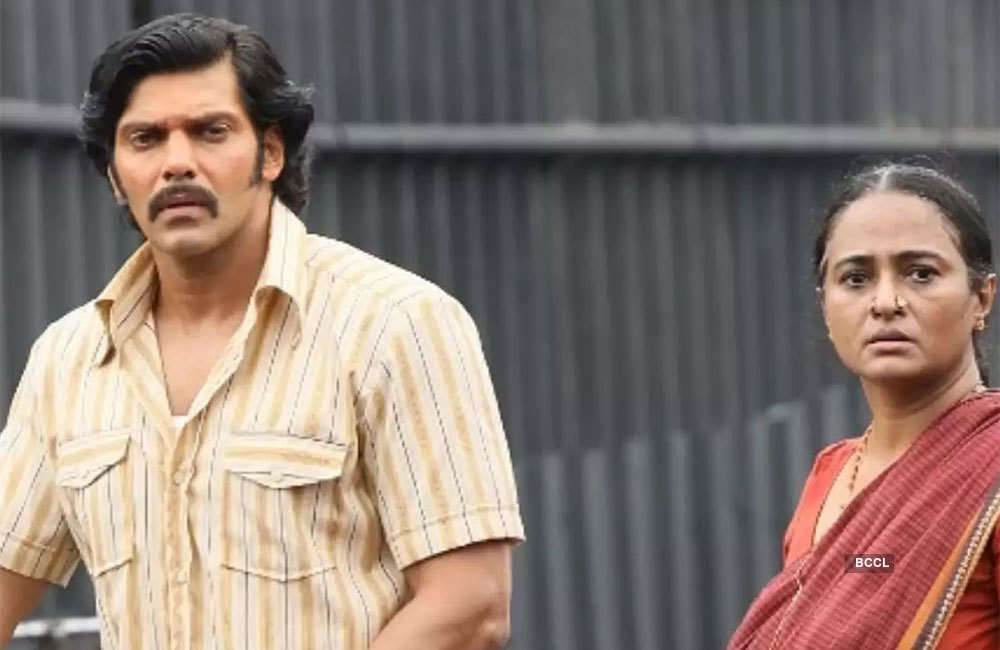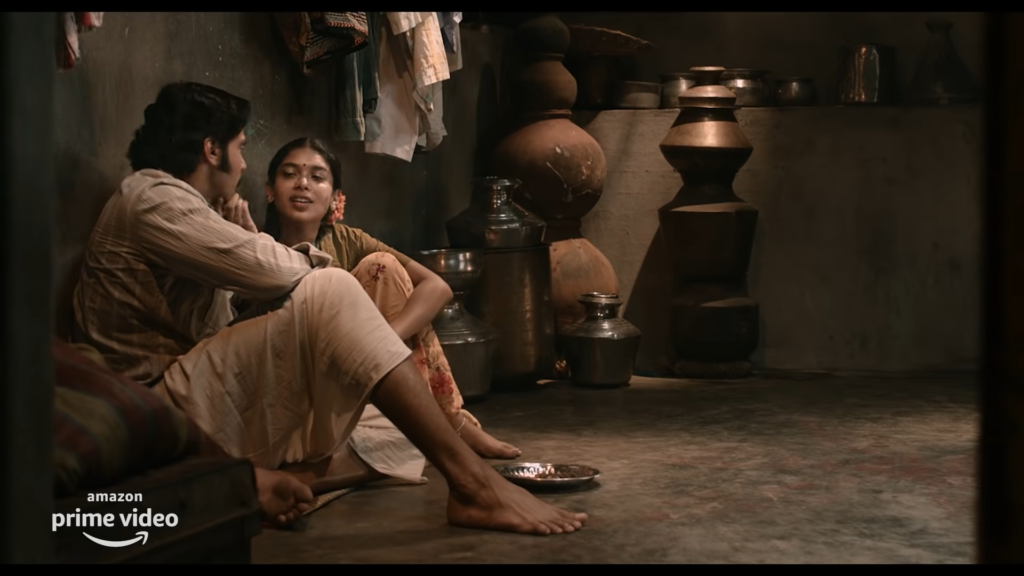Sarpatta Parambarai documents a yester year story of North Madras. It is neither a story of the underdogs, nor of dominant forces. It is a journey. It is a journey towards both individual and collective destinies and what occurs in the form of choices. It is a story of how a colonially passed down sport becomes on the one side a matter of pride and on the other a marker of identity.
Set in Madras of the 1970’s, Sarpatta Parambarai is a tale of two warring boxing clans, each vying for their dominance in the ring. The clans Sarpatta Parambarai and Idiyappa Parambarai are led by two able ‘vaathiyars’ – Rangan and Duraikannu respectively who pit their students against each other. Duraikannu to reclaim his pride from the loss he faced against Rangan in the ring while Rangan attempts to put an end to the repeated defeats of his students against Duraikannu’s protégé, Vembuli.
This gives an impression of the depth from which the rivalries emerge with almost all the characters such as Kabilan, Raman, Kevin aka Daddy, Beedi Rayappan, ‘Dancing’ Rose, Meeran, and of course, Rangan and Duraikannu who have been sparring for years to come, generations after generations. The declining Sarpatta challenges the Idiyappa Parambarai yet again, for one last bout pledging its existence at stake through Raman or Vetriselvan, both sons of former boxers – the dead Munusamy and Rangan himself as hopefuls to reclaim the lost glory.

The struggle to resist one clan’s (read caste) trampling down of another clan in their struggle for upward mobility is used as a metaphor for caste. However, the battle is also about getting one’s facts about history right and protecting one’s right to an authentic past. When a victory that was deservingly earned by Sarpatta Parambarai was denied to them, the dominant clan fabricates one that suits them after years had passed by. The film reminded one of the Battle of Koregaon and the observed remembrance of the contribution of Mahars in the victory over Peshwa rule, popularly known as Bhima Koregaon.
The kind of aggression that a patriarchal society nurtures can be seen both inside and outside the boxing ring. Except for Vetriselvan, almost all of them have lost a paternal figure through boxing in their lives. Ironically, Vetriselvan is the first to be rejected from the final bout by his father. This play of binaries exceeds beyond personal stakes and often enters into the realm of the real with the Emergency as the backdrop, with both Rangan and Vetriselvan marking their allegiance to DMK and AIADMK respectively at vital moments in the plot – a surprising first in Tamil Cinema. Pa Ranjith skillfully draws our attention towards communities and locates their lives and culture against this historical backdrop giving us a retrospective view of contemporary Tamil politics. While the story of the hero might be incidental to all these factors at play, as his rise and fall are invariably bound to the choices offered to him, a significant shift or a transformation ensues when he makes his own choices.

Kabilan is a self-made boxer turned underdog from the working class who makes his way up through the ranks. His ardent love for boxing makes him wait till the end of his workday to return to the ring which his widowed mother despises for reasons we can relate to. The rest of the plot begins to fall in place on predictable lines but the director traces the life of people in North Madras to clear the dirtied lens through which the audience were used to seeing their lives. But, what is different in the cinema today is Pa. Ranjith’s treatment of characters especially women and the nuances with which each of them carries oneself on the basis of their social positions yet evolve to resist and challenge them. Thereby, like his previous movies, Sarpatta also reverses the gaze from looking at people of North Chennai as rowdies and uncivilized ‘pullingo’ to people with richer ways of being and tracing their past through a sporting tradition. Sarpatta Parambarai might seem like another commercial sports drama. However, the way the script is interspersed with folklorish telling of one’s history emphasizes the central role that common people played in their struggle and how they all carry their stories within them, a perspective that mainstream narratives fail to take.
Also Read: The Family Man and OTT Nationalism
The subtext is critical to understand the political discourse of the movie. Significant are the images of Karunanidhi and MGR invoked by Pa. Ranjith through Rangan and Vetriselvan. Yet, the images of Ambedkar and Buddha dominate the background whenever Kabilan is on the screen. While the movie makes no formal statements on its politics like in Ranjith’s previous works, it offers an interesting perspective upon the world that these characters occupy and how it is coloured by politics. The images of training spaces come along with images of people working akin to the images of Buddha and Ambedkar making the viewer conscious of the social position of the sport as much as the characters themselves. Kabilan might have fallen from grace like many youngsters of his age, denied of dignity and respect they duly deserved . ‘Neeye Oli’ is the inner light that the philosophy of Buddha offers that gradually sets the path of Kabilan straight. However, there is no rise of Kabilan without the rise of Bakkiyam and Mariamma.

The interesting mix of English and Tamil spoken by Kabilan’s mother Bakkiyam, and Kabilan’s wife Mariyamma who understands the nuances of boxing training, all point out to a convergence of the larger world into their own microcosm, humanizing these fighters and their lives to the realities that exist around them. Not only does Ranjith smash stereotypical views in the film but exposes the audience to the realities of a dominant social order his characters fight to liberate themselves out. It is here that the choices made by Kabilan find relevance vis-a-vis the choices made for Kabilan by others.
With an electrifying cast and crew ably aided by all supporting actors, stunt directors, production director, cameraman, editor and music director, there is not a false step to be made. However, what strikes prominently across the plot is the pride attached to boxing by all, yet, violence is never the central piece of the spectacle. Though the scenes leading up to the interval might make us question this claim, there is never a resolution in the movie that is arrived at, outside the boxing ring. Considerable grace is offered to all who enter the boxing ring to stake their pride and to reclaim it, echoing Morgan Freeman’s lines in Clint Eastwood’s Million Dollar Baby ‘Boxing is about respect. Getting it for yourself’ [but not taking it away from the other guy]. Thus, Sarpatta manages to reclaim it for all – the characters and the people it represents.
Harikrishnan N and Saravanan V. are Research Scholars with NIAS, Bengaluru and CSSS, JNU respectively. Views expressed here are personal.



